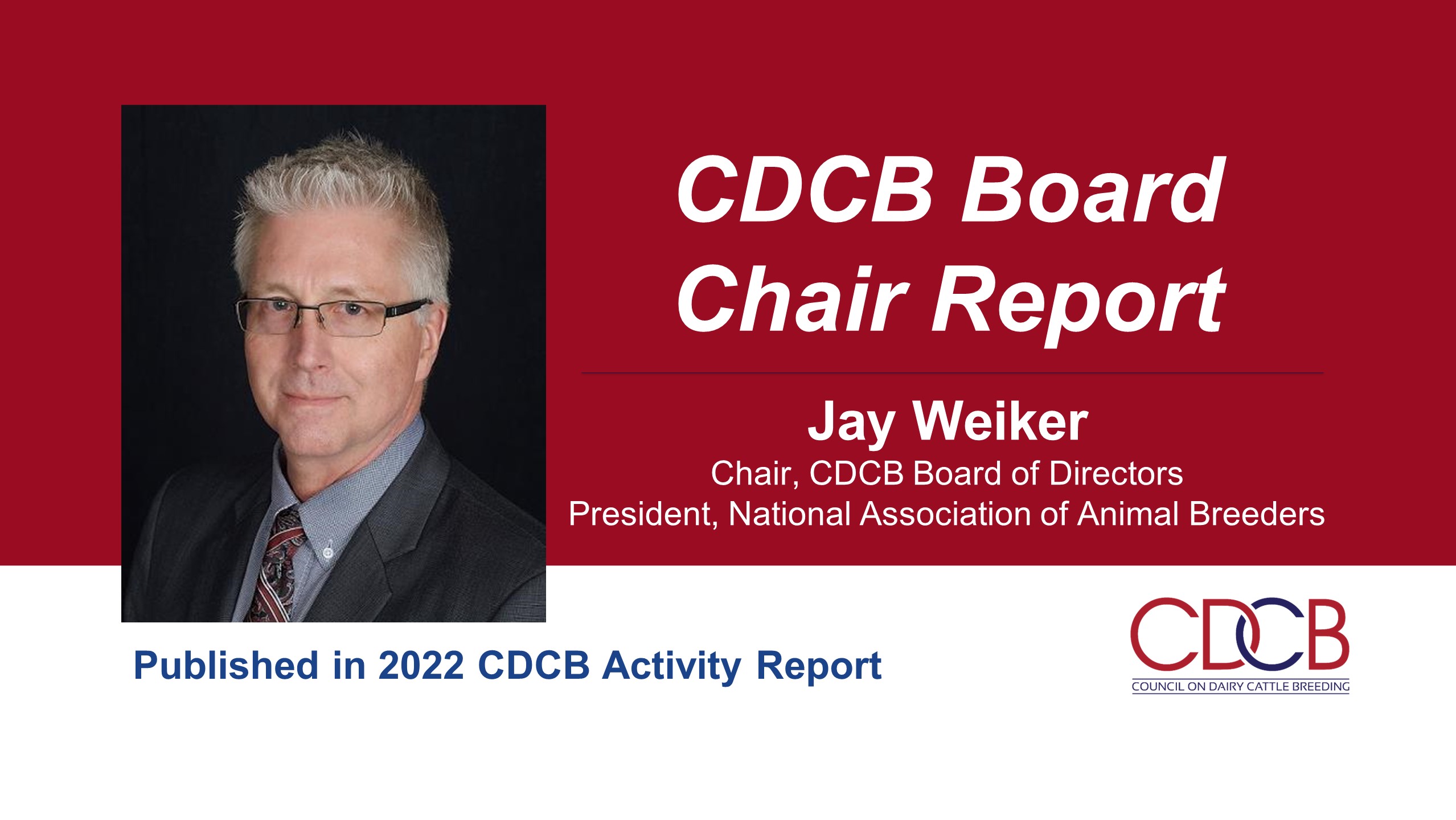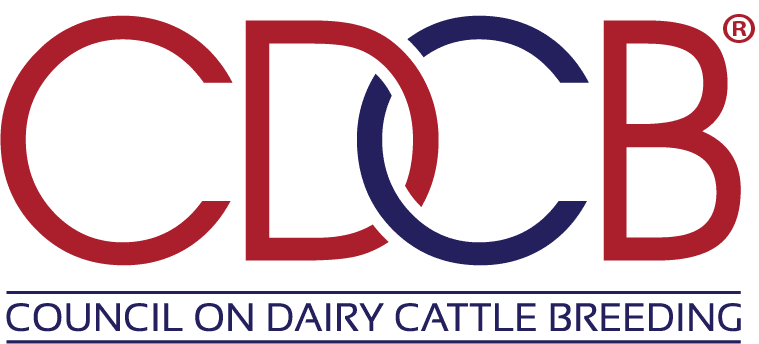Connecting with Jay Weiker
Written by Jay Weiker
October 13, 2022

Jay Weiker, Chair of the CDCB Board of Directors, shares the CDCB progress and priorities of the past year in the newly-published 2022 Activity Report.
If you are not directly involved with CDCB, it may feel like a quiet year. Instead of major changes to evaluations or indexes, CDCB efforts were strategically invested behind-the-scenes in developing new traits and collecting new and more data. Most new traits don’t have clean data readily available, so a significant focus has been laying the foundation for data collection pipelines and exploring data sources to develop other economically-important tools for producers. While this process lengthens the time, it is essential to plan and build for the future. Two major areas of emphasis have centered around the collection of lameness data and the development of an evaluation for milking speed based on quantitative data versus subjective surveys. Continued research with Cattle Eye should produce solid analytical data with high correlations to lameness to identify animals that exhibit signs of lameness, help detect emerging issues and also so producers can be preventative in hoof care.
Dairy producers have adopted changes in reproductive management practices that may affect genetic evaluations. The calculation of fertility evaluations are complicated by the rapid adoption of beef semen on dairy cows, synchronization programs, sexed semen and embryos in repro programs. Fertility traits should be reviewed to account for these changes and to make sure fertility evaluations are robust.
CDCB is committed to funding innovative research in areas such as milk yield calibrations, feed efficiency trials, methane emissions and more described within the 2022 Activity Report. These are longer term research projects that put the financial reserves of CDCB to good use and benefit all producers.
The Dairy Breed Improvement Collaboration shows the commitment of the CDCB Board to make genomics more affordable for Ayrshire, Brown Swiss, Guernsey, and in the future, Milking Shorthorn bulls. Another side benefit was clarifying which bulls are used for A.I. and creating better awareness of differences between use of evaluations for selection purposes and use of a bull’s genomic evaluation to commercially market semen as an A.I. sire. Although the CDCB fee schedule is available to the public, robust discussions have increased understanding of the fee structure and conditions when A.I. Service fees apply.
A year ago, I reported that Residual Feed Intake (RFI) was included in the updated Net Merit $ index in August 2021. The industry has been monitoring this trait and will continue to study what RFI is telling us and if there should be further adjustments. The challenge continues to be the addition of new good quality data to increase the reliability. International data has been considered but adding those phenotypes doesn’t necessarily improve the trait results. CDCB is committing some financial reserves to the collection of additional phenotypic data to increase reliabilities and have data on animals more closely related to the current population.
CDCB is in a sound financial position and is investing a portion of the reserve funds for data and process improvements. The CDCB Board of Directors appreciates the dedication of the entire CDCB staff to produce high-quality results and thanks the entire industry for their ongoing support.
